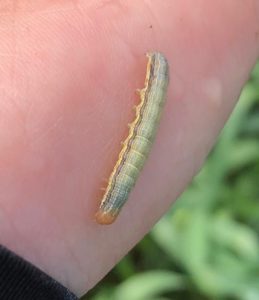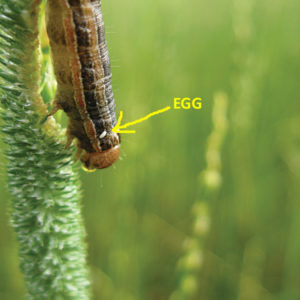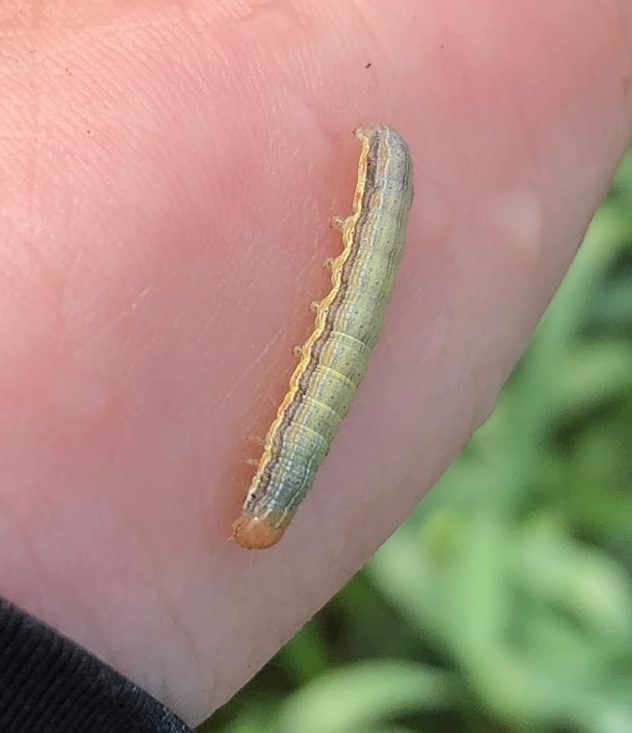This article was written by Tracey Baute, Entomologist- Field Crops and Joanna Follings, Cereals Specialist
True armyworm (Figure 1) has been reported in a number of regions in the province including but not limited to Grey, Bruce, Simcoe, Haldimand, Niagara, Middlesex, Lambton, Elgin, Oxford, Perth, and Bruce counties. Armyworm has been found at low levels in some fields while others have met thresholds and have required control. Those crops that are at most risk include cereals, corn and mixed forages.

We have not had a significant armyworm outbreak like this for a number of years. However, this is a great opportunity to collect as much information as possible and learn from it. To help us get the most information possible, we are asking for your help! If you are out scouting cereal fields this growing season and have come across true armyworm, we want you to let us know where you found this pest and at what levels, along with some basic field information. To enter your field information, please complete the armyworm survey at the following link: True Armyworm Survey. The survey can be accessed from your smartphone, tablet or you can enter the field location information at your desktop computer.
The best time to scout for true armyworm is shortly after dusk when larvae are actively feeding. In corn, examine 20 plants in five areas in the field (100 plants total). In cereals and mixed forages, examine 10 areas of the field, assessing the number of larvae per 30 cm2 (1 ft2). Pay particular attention to the border area directly adjacent to other grassy host crops. During the day, if it is cloudy and overcast, you might be lucky enough to see larvae in the whorl, leaf axil, or on the head of the plant but on sunny days, they will be down on the ground among the crop debris or under soil clods. Brown frass may also be present on the plants and on the soil surface.
Always take the time to look for any white eggs that may be attached to the backs of the armyworm larvae (Figure 2) as well. This is a sign that the larvae have been parasitized by one of its parasites which have done the job for you. Avoid treating with insecticides when large numbers of parasitized larvae are present.

If there are 4 to 5 un-parasitized larvae per square foot and the larvae are smaller than 2.5 cm control may be warranted. If a significant amount of wheat head clipping is occurring, spray may be warranted if larvae are still actively feeding, are smaller than 2.5 cm and as long as pre-harvest intervals have not been reached. If larvae are over 2.5 cm (1 in.) long, insecticides will not provide adequate control.
